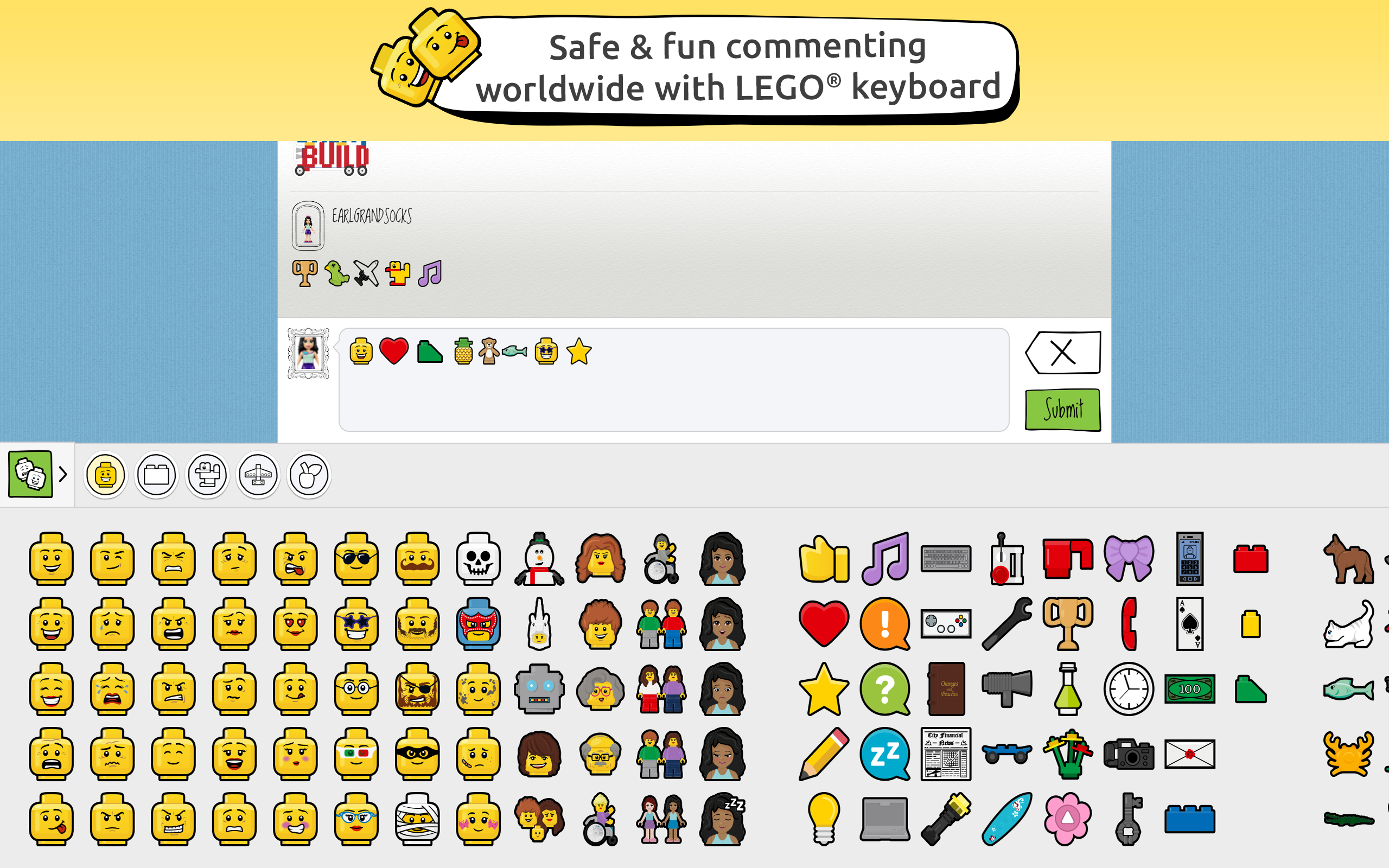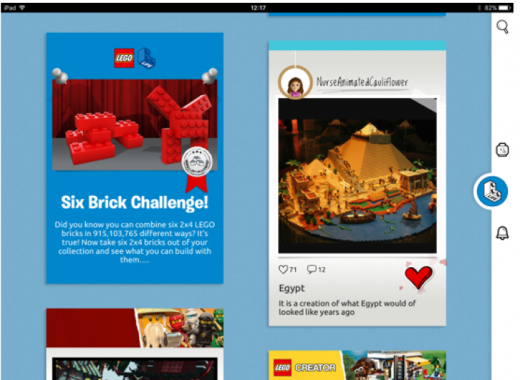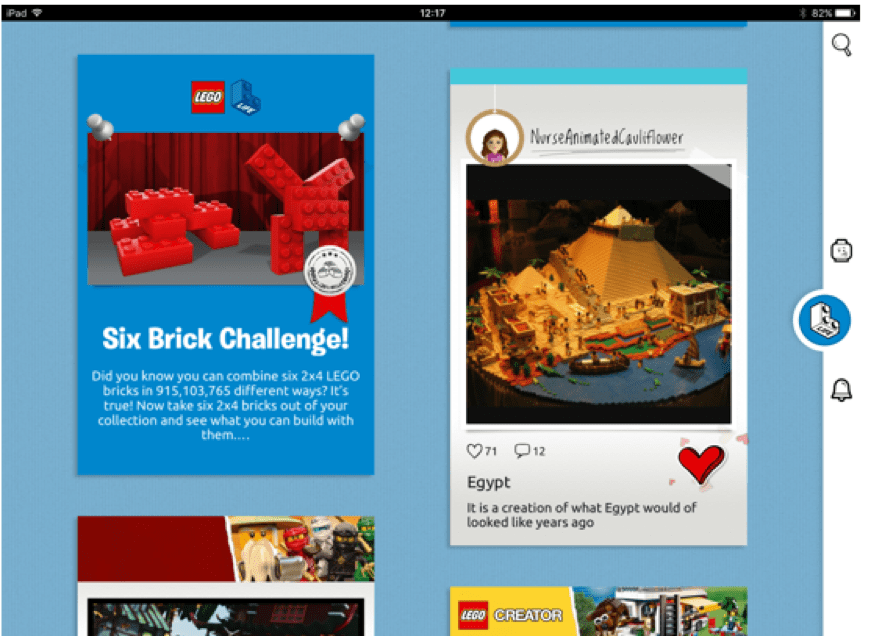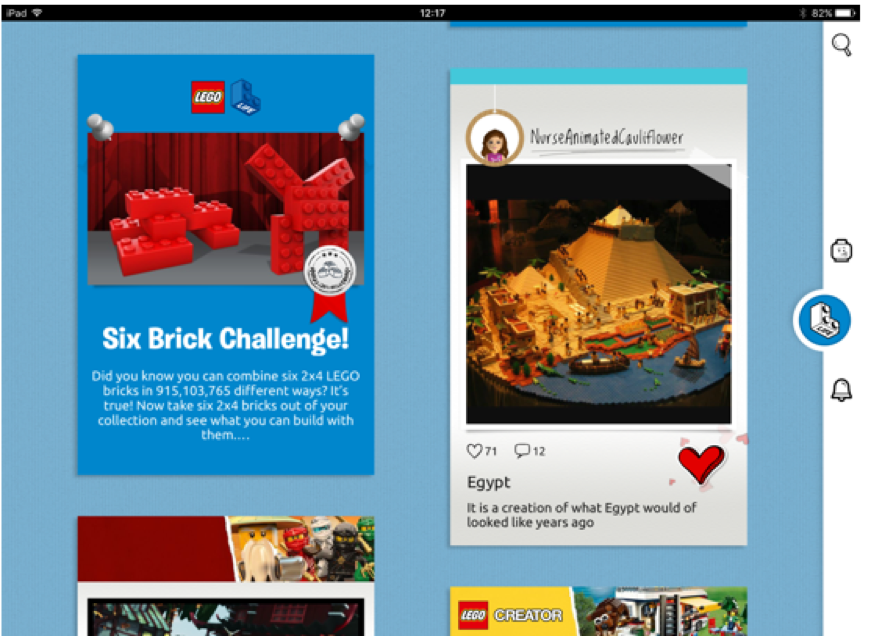Lego launches a safe social network for kids to share their creations
If your child is a budding Lego genius yearning to show off her creative constructions to the world, then Lego has just the place for her to do it. The company behind the iconic bricks has just launched a new social network made for kids under 13. Called Lego Life, it’s designed to let kids connect with a community of their peers. They can look at what other children have created and also share what they’ve built. Lego Life is made for tablets, with iOS and Amazon Kindle Fire versions available today in the US, UK, France and Germany.
If you think the idea is a little odd, Lego says there’s a need for it. Rob Lowe, a senior director for Lego Life, says he believes that kids desperately want to share their creations with a broader audience. “They don’t want to just share with family and friends, and there’s no social networks that they can join,” he says. They could submit their creations to the Lego Club magazine, but with over 6 million members, getting their photos noticed is difficult. With Lego Life, their creations can be shared with the world in minutes. Lego Life has been in beta for a few months now in the UK and has enjoyed some under-the-radar success, according to Lowe.
When they first launch the app, kids will be asked to create their Lego ID with their parent’s email address. The team over at Lego worked closely with UNICEF and the FTC to make sure the app is safe for kids. Therefore, children can’t use their real names; instead, Lego invents names for them. A random name generator comes up with a list of three-word jumbles as the child’s display name, such as DarkMonkeyShrimp or ChairmanSmartDolphin, and they can choose which one they prefer. Kids can then customize their own little Lego mini figurine as their avatar, which can be ported to other Lego apps if they so choose.

Lowe showed me a beta version of the app, and it looks quite colorful. The main central feed is a mishmash of user-created creations as well as those made by Lego itself. The Lego ones are often mini challenges such as “build something with red bricks” or videos showing off animated Lego constructions. There’ll also be posts by Lego Master Builders showing off astounding builds. Some of the content at the top is curated by Lego, but as you scroll down, it gets more random. Once you start liking photos and following certain users, the feed will start to populate with creations it thinks you’ll like, thanks to an internal algorithm.
Aside from other kids, you can also follow certain characters from popular Lego sets, such as Master Wu from Ninjago or Emma from Lego Friends, who share building-inspiration posts. They’ll also appear in your comments occasionally to encourage you along. These accounts are actually controlled by Lego staff, of course, but Lowe says they add a certain element of magic to the Lego Life experience. In addition to following certain users, you can also follow specific Lego hashtags or themes, such as friends, animals or heroes.
Uploading a photo is pretty straightforward. Simply capture it with your tablet’s camera, name the image, tag it with a hashtag or theme, and away it goes. Aside from posting photos of their creations, kids can also adorn them with special Lego emojis and stickers. As they complete more of those Lego mini challenges or upload more creations, they’ll earn more stickers over time.

Speaking of photos, every image is moderated on some level. The first level of sorting relies on image recognition, to make sure there aren’t any faces or personally identifying information such as names or numbers. If it falls into a gray area — where the tool isn’t quite sure what to make of it — then it switches over to human moderation. Also, Lowe tells me that all photos needs to be Lego-related on some level. A picture can contain competitor bricks or Play-Doh, but photos of, say, your pet cat, aren’t going to fly.
Comments are carefully constrained as well. Open commenting is allowed on Lego-created content — though it’s moderated to some degree — while comments on user-created content are restricted to emoji and stickers. “Kids might take negative comments to heart a little more,” explains Lowe.
You can share other things aside from photos too. If you sign into your Lego Life account in the Boost app and click “share,” you can share the code you’ve written for your robot so another child can download it. In the future, Lego hopes to make it possible to upload video, like stop motion perhaps. The only issue there is that voice-over is considered personal information and would need extra parental consent. “You’ll need to use a form of ID to prove who you are,” says Lowe. “The important thing is to keep the child as anonymous as possible.”
“There aren’t that many tools for kids to tell stories,” says Lowe about Lego Life. “Here, there’s an easy and fun way for them to do that.”
(32)






